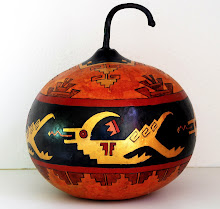
It was constructed in 1886 by Reverend Thomas Bridges, who had a close relationship with the native Yamana people (see this post for more about the Yamana.) He authored the first Yamana-English dictionary, which has helped preserve this language whose native speakers have almost completely died out.

The 150-year old main house was constructed in England, brought in pieces by ship to Ushiaia and re-assembled here. Along with the house, lupins were also brought to Argentina and were first grown here. The Estancia garden was filled with their color when we visited.

This farm was a safe haven for the native Yamana and Selk'nam people, who were otherwise treated quite badly by the settlers. They found work here, and could live on this farm with dignity. Upon their death, they were buried alongside the family, all in one common grave. The crosses marked "Native" belong to the graves of the Yamana who lived on the farm.

Today the farm is owned by Tommy Goodall (Thomas Bridges' great-grandson), and his American-born wife Natalie Prosser, a famous biologist. The traditional activities in the farm have long come to a stop, but relics from those days are visible everywhere.


Now the main activity on the Estancia is tourism. I couldn't get enough of the beautiful scenery there. The deep blue of the peaceful waters and sky, lush green fields filled with white and yellow daisies and wildflowers, horses grazing lazily in the warm sunshine, and the timelessness of the place itself.
Though there were no daffodils there, Wordsworth's poem played itself in my mind, and I tried to retain the sights in my memory, for when I am in a "vacant or pensive mood" later.




Have a peaceful day.












